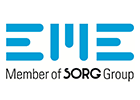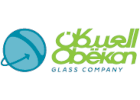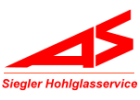Happy birthday: 20 years JM Trnava
Johns Manville completed the purchase of the glass fiber company Skloplast, a.s., in Trnava, Slovakia, on March 12, 2001. As a result, Trnava became the largest JM production location and remains so to this day. How did this acquisition come about? What challenges had to be overcome? We asked two long-time JMers about this: Chairman Mary Rhinehart and Roger Twisselman, Corporate Secretary and Associate General Counsel.
The time of acquisition
”By the late 90s, JM had reviewed several companies in Central and Eastern Europe,” Rhinehart said. “Most of them were former government-owned companies that had been privatized. None of those made economic sense to JM at the time. But we did complete several other acquisitions such as the woven glass fabric companies Mitex Group and Tasso AB, a glass mat production facility in Steinach, Germany, and we started our first venture in China. On top of this we acquired the Monobond business of Hoechst AG, which included our Berlin and Bobingen, Germany, plants.”
Twisselman said JM first conducted due diligence on Skloplast in about 1996, but discussions did not progress until 1999.
Armed with pencils and calculators
“When the JM due diligence team finally showed up in Trnava in March of 2000, the Skloplast chairman commented that they did not have this many foreign visitors since 1968 during the ‘Prague Spring,’” Twisselman said. “We assured him that we came armed only with pencils and calculators. Everyone laughed on both teams and the ice was broken. It then took one year to reach an agreement and close the transaction.”
A tale of whales, swallowing fish
This was also the time when JM was acquired by Berkshire Hathaway. How did this work out? Rhinehart recalled: “Both transactions were going on during December 2000 and January and February of 2001. Many of us were working on both at the same time. It felt a bit like a medium-sized fish was about to swallow a smaller fish just as a whale was about to swallow the medium fish. Berkshire gave JM the green light to close the Skloplast purchase.”
A JM senior executive at the time described the purchase like this: “Skloplast has very good, educated employees, excellent contacts with its customers and 90% of its business is carried out in Western Europe. I think we bought a pearl that will bring us much success.”
“I love Lucy”
Twisselman remembered the challenges of the time: “Language was a huge challenge, especially given the fact that JM launched extensive efforts to ensure that employees were working safely. We hired a translator to assist at all the meetings but he couldn’t cover everything and every meeting. Ultimately, we found a young Slovak who spoke perfect American English, including slang language. I asked where he learned American English as well as he did. I assumed he had lived in the U.S. As it turned out, he learned from watching reruns of old American TV shows. He knew every episode of the old show ‘I Love Lucy.’”
Education was critical, especially given the language differences. It was the Skloplast team deciding, and not JM, that they needed to learn English. The company sponsored lessons and many of the employees quickly picked up the new language.
Welcome to the Johns Manville global family
Also, the integration of Skoplast was certainly a challenge on its own. The former chairman of Skloplast agreed to stay in place for a period while JM found people who could help integrate the company into JM. Many managers of JM Germany had roles overseeing Skloplast operations and functions. Business operations were restructured to move from one leader controlling all decisions to a team of senior managers.
The rapid expansion of Skloplast from 1999 to 2002 made the company one of the most important European glass fiber producers. In addition to increasing production capacity, the company in these years also invested in the modernization of the facility.
In August 2003, Skloplast leadership decided to change the company name from Skloplast to Johns Manville Slovakia.
United as one team
“The strength and the persistence of the Skloplast employees was just great. We were all pleasantly amazed at how well they did with the integration into Johns Manville,” Rhinehart said. “All of the teams worked so hard to make this acquisition successful for all involved. They were amazing. They put their all into it. We know it wasn’t easy – but they succeeded.”
Rhinehart added: “JM is better off today for having the teams in both Europe and the teams in North America working together and sharing best practices and learning from each other. Over the years, we became truly one team!”
Happy anniversary, Trnava plant!



























